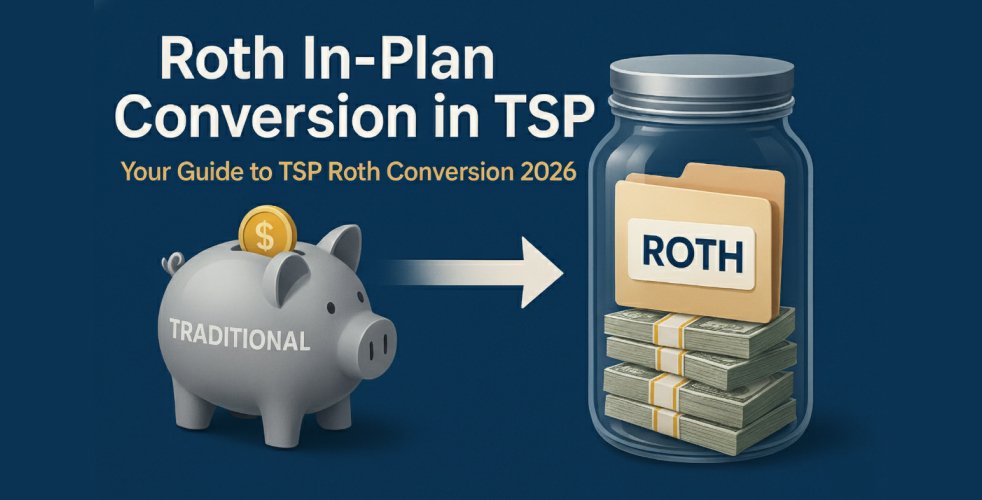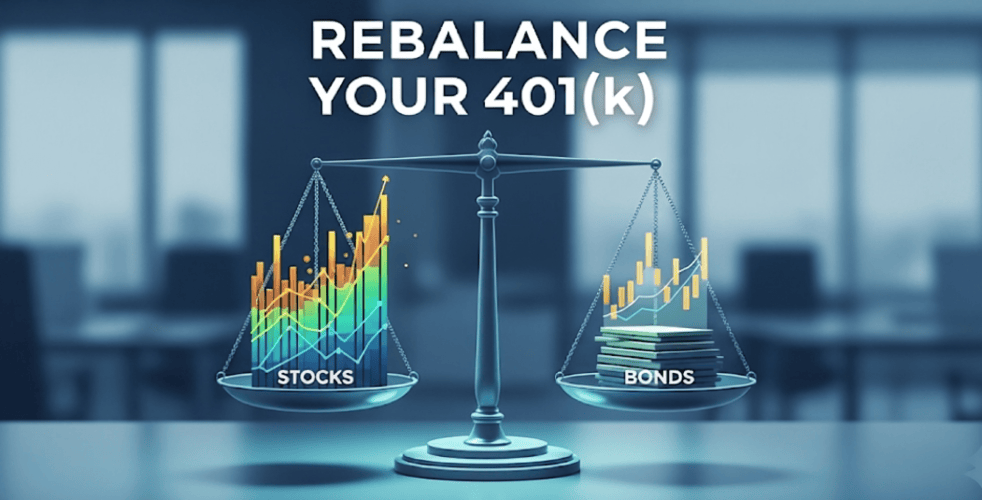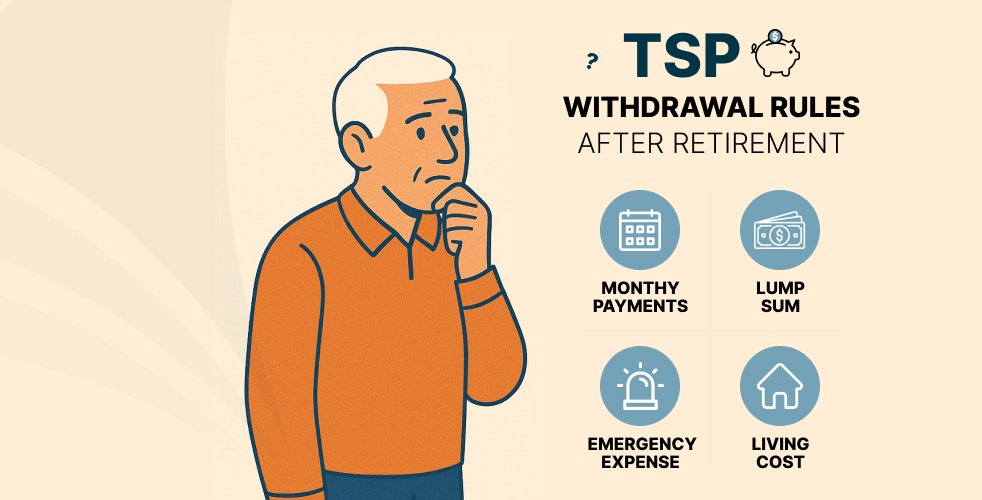
A 401(k) plan is one of the most effective tools employees have for building long-term financial security. It provides a structured way to save for retirement while offering tax benefits, employer matching contributions, and investment growth opportunities. However, simply contributing to a 401(k) isn’t enough. You need to actively manage it in order to maximize your retirement savings.
Model Investing can help you make data-driven decisions to optimize your 401(k) portfolio and ensure you’re on track for a financially secure retirement.
How Does a 401(k) Work?
A 401(k) is a tax-advantaged retirement savings plan offered by many employers. It allows employees to contribute a portion of their paycheck either before or after taxes.
There are two main types:
- Traditional 401(k): Contributions are made pre-tax, reducing taxable income in the current year. However, withdrawals in retirement are taxed as regular income.
- Roth 401k: Contributions are made after-tax, meaning both contributions and earnings can be withdrawn tax-free in retirement.
Choosing between the two depends on whether you prefer tax savings now or in the future. Many employees go for a combination of both for greater flexibility. If you’re unsure which option suits your situation best, this Guide to Roth vs. Traditional IRAs offers helpful insights that also apply to 401(k) decisions.
Essential 401(k) Benefits Every Employee Should Know
Tax Advantages: Lowering Your Taxable Income
One of the biggest 401(k) benefits is its tax-advantaged status. Contributions to a Traditional 401(k) reduce your taxable income, meaning you owe less in taxes each year.
For example, if you earn $75,000 and contribute $5,000 to your 401(k), your taxable income drops to $70,000, resulting in potential tax savings. This allows you to keep more of your hard-earned money invested and compounding for the future.
Automatic Savings
401(k) contributions are deducted directly from your paycheck. This automatic process removes the need for manual transfers or reminders, making it easier to stick to your long-term savings goals.
Over time, this “set it and forget it” approach allows your savings to grow with minimal day-to-day effort. Additionally, because contributions to a Traditional 401(k) are made pre-tax, you may not feel the full impact on your take-home pay, making it easier to save without sacrificing your lifestyle.
Long-Term Growth Potential
One of the biggest advantages of a 401(k) is its ability to grow your savings significantly over time. As your contributions are invested in assets like stocks and bonds, they have the opportunity to earn returns year after year.
Those returns can then generate their own earnings through the power of compounding—essentially, your money makes more money. The longer your investments stay in the plan, the more this compounding effect can accelerate, making consistent contributions to a 401(k) one of the most effective ways to build wealth for retirement.
Employer Matching Contributions: Free Money for Retirement
Many employers match a percentage of employee contributions, which is essentially free money added to your retirement savings. For example, if your employer offers a 100% match up to 5% of your salary, contributing at least 5% ensures you’re not leaving money on the table. Missing out on this match can mean losing thousands of dollars over time.
Higher Contribution Limits: Maximizing Yearly Deposits
For 2025, employees can contribute up to $23,500 annually to their 401(k) accounts. If you’re aged 50 or older, you’re eligible for an additional $7,500 catch-up contribution, allowing a total contribution of up to $31,000 for the year. New provisions also allow those aged 60 to 63 to make catch-up contributions up to $11,250, increasing the total potential contribution to $34,750.
These increased limits help employees boost their retirement savings especially in the critical years leading up to retirement.
Maximizing your contributions not only grows your nest egg faster but also ensures you’re making the most of tax-deferred growth and employer matching opportunities—two of the biggest long-term benefits of a 401(k) plan.
Start Maximizing Your 401(k) Benefits
How to Maximize Your 401(k) Contributions
Increase Contributions Over Time
As your salary grows through raises and cost-of-living adjustments, you should increase your 401(k) contribution percentage. Many retirement savers start with a 5% contribution and gradually increase it to 10-15%. Some 401(k) plans allow automatic contribution increases, which makes this process simple and hassle free.
Take Advantage of Catch-Up Contributions (for Employees 50+)
If you’re 50 or older, you can significantly boost your retirement savings by making catch-up contributions to your 401(k). For 2025, the IRS allows you to contribute an additional $7,500 on top of the standard $23,500 annual limit—bringing your total possible contribution to $31,000 for the year ($34,750 for those aged 60-63). This is an excellent strategy for workers nearing retirement who want to make up for lost time or maximize tax-deferred growth in their final working years.
How to Pick the Best 401(k) Investments for Growth
Not all 401(k) investment options are created equal. Choosing the right mix is crucial for long-term success.
Understanding Investment Choices:
- Stocks (Higher Risk, Higher Reward): Best for long-term growth.
- Bonds (Lower Risk, Steady Growth): Helps protect savings from market downturns.
- Stable Value Funds: Preserve capital with minimal market exposure.
- Target-Date Funds (Avoid These): These auto-adjust over time but do not factor in current or future economic conditions, making them suboptimal for maximizing returns.
To make informed decisions and build a stronger allocation strategy, Model Investing’s 401(k) Allocation Model Tutorial offers a step-by-step guide to optimizing your investment mix.
401(k) Allocation Model: A Smarter Way to Invest!
Model Investing’s 401(k) Allocation Model helps you get more out of your retirement savings by adjusting your investments every month. Instead of sticking with the same basic funds, this model responds to changes in the market to lower your risk and boost your returns.
It’s a smart way to enjoy more of your 401(k) benefits helping you avoid big losses and grow your money faster over time.
Optimize Your 401(k) and Invest Smarter with Model Investing!
When and How Can You Withdraw Money From Your 401(k)?
Understanding when and how you can withdraw money from your 401(k) is essential to avoid unnecessary taxes and penalties. There are four main types of withdrawals, each with specific rules:
- Standard Withdrawal: This applies once you reach age 59½. At this point, you can begin withdrawing from your 401(k) without incurring a 10% early withdrawal penalty. These withdrawals are taxed as ordinary income unless they come from a Roth 401(k).
- Early Withdrawal: If you take money out before age 59½, you’ll typically owe a 10% early withdrawal penalty in addition to regular income tax. There are limited exceptions, such as permanent disability, certain medical expenses, or using the Rule of 55 if you leave your job at age 55 or older.
- Loan: Many 401(k) plans allow participants to borrow against their balance. You can typically borrow up to 50% of your vested account balance, up to $50,000. Loans must be repaid (with interest) within five years, or the unpaid balance will be treated as an early withdrawal, subject to taxes and penalties.
- Hardship Withdrawal: These are allowed under certain IRS-defined conditions such as medical emergencies, funeral expenses, or to prevent foreclosure on a primary residence. While the 10% early withdrawal penalty might be waived, the withdrawn amount is still subject to regular income tax.
Understanding these withdrawal options helps you make informed financial decisions and better plan for both expected and unexpected life events.
Avoiding Common 401(k) Mistakes
- Not Contributing Enough to Get the Full Employer Match: Failing to take advantage of an employer match is equivalent to rejecting free money. Always contribute at least enough to receive the maximum match.
- Withdrawing Early and Paying Penalties: Withdrawals before age 59½ are subject to a 10% penalty plus income taxes, reducing your savings significantly. Consider alternative financial options before tapping into your retirement fund.
- Not Diversifying Investments Properly: Investing too conservatively can result in lower long-term returns, while excessive risk can lead to significant losses. A diversified portfolio balances risk and return.
- Ignoring Fees That Reduce Long-Term Gains: Some 401(k) plans charge high management fees that eat into returns. Compare investment options and choose funds with lower expense ratios to maximize growth. To protect your retirement savings, it’s important to compare expense ratios and choose low-cost funds that maximize growth over time.
Conclusion
A 401(k) plan is one of the most effective ways to build a secure retirement. By contributing consistently, taking advantage of all benefits that come with plan, and choosing the right investment strategy, employees can grow their wealth effectively. Optimizing contributions, avoiding costly mistakes, and adjusting for life changes will ensure that your 401(k) provides financial stability when you need it most.
FAQs
1. How much should I contribute to my 401(k)?
The ideal 401(k) contribution in 2025 is 15% of your gross income, including any employer match. At the very least, you should contribute enough to receive your company’s full match otherwise, you’re leaving free retirement money on the table. The IRS 401(k) contribution limit for 2025 is $23,500 for individuals under 50, $31,000 if you’re 50 or older, and $34,750 if you’re age 60 to 63.
2. How often should I adjust my 401(k) investments?
You should review and adjust your 401(k) investments at least quarterly to stay aligned with market trends and your retirement goals. Quarterly rebalancing helps manage risk, capture gains, and avoid drift in your asset allocation. It’s especially important during volatile markets or when personal milestones—like a new job, marriage, or nearing retirement—occur.
3. What happens if I max out my 401(k) contributions?
If you hit the annual contribution limit you can still grow your retirement savings through other accounts. Consider opening a Roth IRA, a Traditional IRA, or investing in a taxable brokerage account for additional flexibility and diversification. Many high-income earners also look into backdoor Roth IRAs or HSA investing for tax efficiency.
4. Can I have both a 401(k) and an IRA?
Yes, you can contribute to both a 401(k) and an IRA. In fact, combining them is a smart retirement strategy. A 401(k) gives you high contribution limits and employer matching, while an IRA (Traditional or Roth) gives you more control over investment choices and tax planning. Just be aware that your income may affect how much you can contribute to a Roth IRA.
5. When can I start withdrawing from my 401(k)?
You can start penalty-free withdrawals from your 401(k) at age 59½. If you withdraw earlier, you’ll likely face a 10% early withdrawal penalty plus regular income taxes unless you qualify for exceptions such as disability, medical hardship, or using the Rule of 55 (if you leave your job at 55 or older). At age 73, required minimum distributions (RMDs) begin unless you’re still working and don’t own more than 5% of the company.
6. What should I do with my 401(k) when I leave my job?
When you switch jobs, you generally have four options:
- Leave it with your old employer’s plan (if allowed).
- Roll it over to your new employer’s 401(k).
- Transfer it into a rollover IRA for more control and investment options.
- Cash it out (not recommended—this triggers taxes and penalties).
7. Can I have more than one 401(k) account?
Yes, you can have more than one 401(k) if you’ve worked for multiple employers. But remember, the IRS contribution limit applies across all accounts. Having multiple accounts may complicate overall account management, so consider consolidating them to simplify your finances.
8. What’s the best way to manage my 401(k)?
Model Investing helps you optimize your 401(k) with expert-built investment models, automated monthly rebalancing, and a data-driven approach. It eliminates guesswork and emotional investing mistakes, helping you avoid big losses and maximize your retirement growth. For most employees, professional support can make a huge difference in long-term returns and peace of mind.

An innovative approach for eaming higher returns with less risk
Download Report (1.2M PDF)You don’t want to look back and know you could’ve done better.
See PricingPosted in




